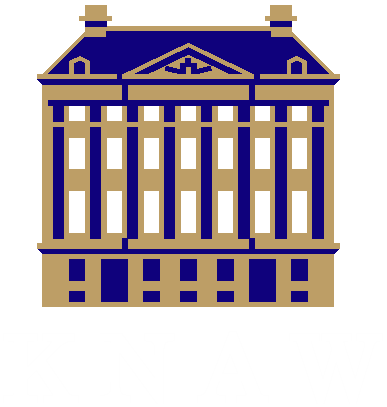Hierarchical Planning
Hierarchical Planning Workshop
An ICAPS 2018 Workshop, Delft, The Netherlands
Monday, June 25, 2018
In addition to this workshop, there will also be a half-day tutorial on HTN planning.
List of Accepted Papers
- A Depth-Balanced Approach to Decompositional Planning for Problems where Hierarchical Depth is Requested
David R. Winer and Rogelio E. Cardona-Rivera - Assumption-based Decentralized HTN Planning
Ugur Kuter, Robert P. Goldman, and Josh Hamell - HEART: HiErarchical Abstraction for Real-Time Partial Order Causal Link Planning
Antoine Gréa, Laetitia Matignon, and Samir Aknine - HTN Plan Repair Using Unmodified Planning Systems
Daniel Höller, Pascal Bercher, Gregor Behnke, and Susanne Biundo - Programmatic Task Network Planning
Felix Mohr, Theodor Lettmann, Eyke Hüllermeier, and Marcel Wever - Tracking Branches in Trees - A Propositional Encoding for Solving Partially-Ordered HTN Planning Problems
Gregor Behnke, Daniel Höller, and Susanne Biundo - XPLAN: Experiment Planning for Synthetic Biology
Ugur Kuter, Robert P. Goldman, Daniel Bryce, Jacob Beal, Matthew Dehaven, Christopher S. Geib, Alexander F. Plotnick, Tramy Nguyen, and Nicholas Roehner
Schedule
Susanne Biundo
David R. Winer
Antoine Gréa
XPlan: Experiment Planning for Synthetic Biology, Ugur Kuter
HTN Plan Repair Using Unmodified Planning Systems, Daniel Höller
Tracking Branches in Trees – A Propositional Encoding for Solving Partially-Ordered HTN Planning Problems, Gregor Behnke
For the list of presented posters, see the poster teasers above.
David E. Smith
Ugur Kuter
Felix Mohr
Workshop Organizers
For the list of presented posters, see the poster teasers above.
Invited Talks
Susanne Biundo:Enabling Advanced User Support through Hybrid Planning
In this talk, we introduce Hybrid Planning, a formalism especially designed for user-centered planning. It combines features of hierarchical task networks and partial-order causal-link planning in a well-defined manner, thereby reflecting and explicitly representing the causal and hierarchical reasoning planning is about. We discuss the essential features of this formalism and show how plan generation, plan explanation, plan repair, plan recognition, and mixed-initiative planning are realized within this integrative framework. Finally, we show how these planning capabilities implement the core of advanced assistance systems.
David E. Smith:
Characterizing Tasks in the Cockpit
The actions associated with piloting an aircraft can be naturally arranged in a hierarchy. At the top level, there are different phases of flight - pushback, taxi, takeoff, climbout, cruise, descent, approach, landing and taxi. Within each phase, there are multiple route segments, and within each segment, there are multiple actions that need to take place, such as setting autopilot mode, speed, and altitude, manipulating flaps, gear, brake settings, cabin pressure, etc. While this seems well suited to an HTN representation, there are a number of challenges with this domain. First of all, HTN methods have traditionally allowed decomposition of tasks into sequences or partially ordered sets of subtasks. However, in this domain, this is not sufficient; many actions are event driven - that is, the desired start of each action is based on events such as reaching a particular airspeed or altitude, or crossing a particular fix (route waypoint). Thus the decomposition of a task often consists of a set of partially ordered event driven actions or subtasks. The timing of these events cannot be accurately predicted in advance, because of uncertainty in winds, aircraft performance, and the actual time that actions are executed by the pilot.
A second challenge is that subtasks can also be monitoring activities - e.g. assuring that airspeed or altitude remain within certain bounds in the window between two other events. If the monitored condition is violated, contingency actions need to be taken to bring behavior back into line.
Planning is also difficult in this domain, because plan validity is difficult to establish - nonlinear numerical simulation is required to determine actual aircraft behavior and determine whether a plan achieves the desired objectives for a flight phase or segment. As a result, crude models must be used for planning, and fast simulation and sampling must be used to narrow the windows for activities at run-time.
I will describe these challenges in greater detail, and show some of our initial attempts to encode and reason with event driven activities, monitoring activities, and contingency tasks in an HTN framework.
Program Committee
- Ron Alford
- Roman Barták
- Gregor Behnke
- Pascal Bercher
- Susanne Biundo
- Kutluhan Erol
- Robert Goldman
- Daniel Höller
- Ugur Kuter
- Felix Richter
- Mak Roberts
- Vikas Shivashankar
Organizing Committee
- Pascal Bercher, pascal.bercher@uni-ulm.de
- Daniel Höller, daniel.hoeller@uni-ulm.de
- Susanne Biundo, susanne.biundo@uni-ulm.de
- Ron Alford, ralford@mitre.org
Call for the First International Workshop on Hierarchical Planning
The motivation for using hierarchical planning formalisms is manifold. It ranges from an explicit and predefined guidance of the plan generation process and the ability to represent complex problem solving and behavior patterns to the option of having different abstraction layers when communicating with a human user or when planning co-operatively.
The best-known formalism in the field is Hierarchical Task Network (HTN) planning. In addition, there are several other hierarchical planning formalisms, e.g., hybrid planning (incorporating aspects from POCL planning), Hierarchical Goal Network (HGN) planning (incorporating a hierarchy on goals), or formalisms that combine task hierarchies with timeline planning (e.g. ANML). We encourage contributions independent of the underlying hierarchical planning formalism.
Hierarchies induce fundamental differences from classical planning, creating distinct computational properties and requiring separate algorithms for plan generation, plan verification, plan repair, and practical applications. Many of these aspects of hierarchical planning are still unexplored. The workshop invites submissions on any aspects of hierarchical planning. Topics of interests include but are not limited to:
- theoretical foundations, e.g., complexity results
- heuristics, search, and other solving techniques for plan generation
- techniques and foundations for providing modeling support
- challenges and lessons learned from creating hierarchical planning models
- applications of hierarchical planning (e.g., challenges and lessons learned from applying hierarchical planning techniques in real-world systems)
- aspects of engineering hierarchical planning systems
- plan explanation based on hierarchical models
- hierarchical plan repair techniques
- techniques for verifying solutions of hierarchical planning problems
Submission Details
The formatting guidelines (author kit, anonymous papers, etc.) are the same as at ICAPS 2018. Authors may submit *long papers* (8 pages plus up to one page of references) or *short papers* (4 pages plus up to one page of references). In case of acceptance, the full 5, resp. 9, pages can be used for the paper, e.g. to address the reviewers' comments.
Like at the main conference, there will be a high quality double-blind review process against the standard ICAPS criteria of relevance, originality, significance, clarity, and soundness. However, submissions may be less evolved than at the main conference.
The submission system is now open: https://easychair.org/conferences/?conf=icapshierarchyws2018
Important Dates
- Submission deadline:
18. March, 2018Deadline Extension: 24. March, 2018 - Notification of acceptance: 20. April, 2018
- Camera Ready Version: 23 May, 2018












